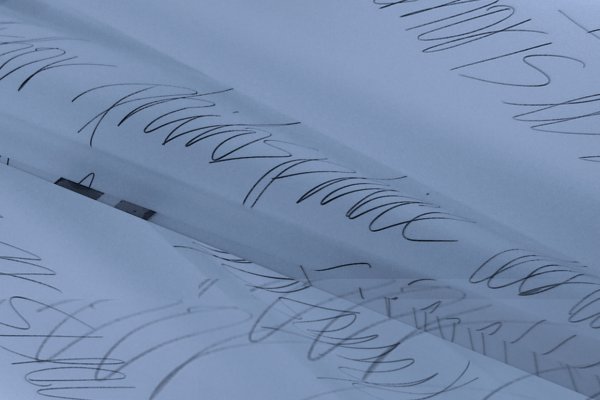IN SEARCH OF LOST PARADISES
Laufzeit:
Öffnungszeiten:
23/09 - 15/10
Tuesday - Friday
10.00 a.m. - 7.00 p.m.
Saturday & Sunday
10.00 a.m. - 5.00 p.m.
17/10 - 17/11
Tuesday - Friday
2 - 7 p.m.
and by appointment
Eröffnung:

IN SEARCH OF LOST PARADISES
IN SEARCH OF UTOPIAS
By Concha Jerez
Between 1913 and 1922, when he died, the French writer Marcel Proust wrote the seven parts of À la recherche du temps perdu (In search of lost time), which had an enormous influence not only on the field of literature, but also on philosophy and art theory of the 20th century and which today seems more current than at the time when he wrote it.
For a while now, I have been relating various works – without mentioning this explicitly – to À la recherche du temps perdu. Currently, however, my focus lies more on In search of lost paradises (À la recherche des paradis perdus) or even on In search of the time of Utopias (À la recherche du temps des Utopies) - as a way of escaping the overwhelming reality subjected to the dictates of the economy with which most politicians bombard us in their speeches broadcast by the media every day.
In Europe, since the publication in France of L'Encyclopédie ou Dictionnaire raisonné des sciences, des arts et des métiers between 1751 and 1772, and later, during the 19th and 20th centuries, a number of key Utopias emerged. At first, they seemed capable of changing negative aspects of the reality lived by the greater part of humanity, of transforming and improving its social conditions.
Over time, however, many of these Utopias deviated from their initial aims, whether this was due to their transformation or in their interpretation by particular advocacy groups who destroyed these Utopias by instrumentalising the ideals and goods for their own purposes, although the ultimate objective of these Utopias was originally to create improvements for the majority of humanity. We now know that this failure of Utopias was not coincidental, but rather intentional and planned.
As early as 1993, as part of the In Control. mensch - interface - maschine project, I wrote in the introduction to my installation INTERFERENCE LANDSCAPES: “In our present era of the power of information, there is little possibility of surviving as independent human beings. The individual can try to survive by retreating into him/herself. The individual can interact with the outside world by making interventions or interferences in it. Although I have tried with my work to integrate both positions, I currently think that, although the first option is essential to creative activity, it is the development of the second possibility that is of vital relevance in becoming aware of – and eventually acting within – society itself, particularly against the totalitarianism that originates from and is manipulated by the great multinationals of information.”
The installation IN SEARCH OF LOST PARADISES. IN SEARCH OF UTOPIAS focuses on the search for forgotten, lost or possible paradises.
Description of the installation
The Game of the Goose – in its role as a game of knowledge – serves as the main axis for the concept and design of the installation as well as an instrument in the search for knowledge. A significant connection for it’s symbolism is the pilgrimage route of the St. James’s Way, also known as Camino de las Estrellas (The Road of the Stars) and the Camino de las Ocas (Way of the Goose). The St. James place consists of a floor mosaic that assigns fields of the Game of the Goose to stations of the St. James Way. The geese who have fixed migratory routes along the St. James Way became a symbol of divine wisdom. The Game of the Goose was memorised and practised, and so became a guide for the players. The target field of the play, the so called “Geesegarden”, can be understood as a vision of the paradise. In the installation the Game of the Goose serves as guide to our own imagination about paradise. The floor of the exhibition space is marked with a game board made up of rectangular fields of play. Fourteen fields are accentuated by the spatial setting: each holds a music stand wrapped with transparent film, an LED fluorescent tube and a loudspeaker. The artist has covered the transparent film by hand with lost paradises. The eight pillars of esc mkl are clad in acrylic mirrored surfaces, creating a mosaic of reflections. The loudspeakers of the fourteen modules play recordings about lost paradises in fourteen languages, a different language on each loudspeaker. The artist’s intention is to create a kind of murmur about lost paradises in the space that becomes perceptible for visitors only as they get closer. In reference to John Cage’s piece 4’33” and Concha Jerez’ installation 155 h. 4’33” from 2010, the recordings also have a length of 4’33”. They are further structured in intervals: 1’33”, 2’33” und 3’33”. These intervals serve as clock and as placement of these voices in time. A murmur of lost paradises develops in the space. The single paradises focus in the closeness of the spacial modules. The video that is shown in two opposite projections at the centre of the Goose’s Game is composed of images coming from several works realized by Concha Jerez in Graz since 1993 in a today’s approach and of a Jerez’s walk through Graz searching for memories of her different projects.
The paradises chosen by Concha Jerez are played in 14 different languages, translated and spoken by the following people:
Concha Jerez & Jose Iges - Spanish Reni & Jogi Hofmüller – German Kate Howlett-Jones & Adam McCartney – English Tünde Primus-Kövendi – Hungarian Daniela Brasil – Portuguese Aurélie Zouaoui – French David Pirrò & Davide Gagliardi – Italian Severin Hirsch – Slovenian Marián Potočár & barb huber – Slovakian Cihan Çoşkun – Turkish Cihan Çoşkun – Kurdish Maryam Mohammadi – Farsi Ada Kobusiewicz – Polish Mazen Chama – Arabic
Biographical Details
Concha Jerez (ES) is an internationally renowned pioneer of intermedia art, whose work and research has played a significant role in shaping the transition from analogue to digital technologies in art production.
Concha Jerez was born in 1941 in Las Palmas de Gran Canaria, grew up in Africa and has lived in Madrid since 1955. Since 1970 she has worked on intermedia art, since 1976 focusing on the concept of installation and site-specificity. Jerez’s artistic fields of activity have encompassed collage, montage, assemblage, photography, drawing, installation, video, action and performance. From 1986 to 1988 Jerez organised workshops for young artists at the “Instituto de la Juventud”. From 1985 to 1990, further seminars and workshops were developed by the artist in collaboration with the Spanish ministry of education. Since 1989 Jerez has been working with José Iges, jointly planning numerous sound installations, performances and radio pieces. Between 1991 and 2011 she was a professor at the faculty of visual art of the University of Salamanca.
Concha Jerez sees herself as a theoretician, composer, author, photographer and sound artist.
In 2011 she was awarded the “Medalla de Oro al Mérito en las Bellas Artes” by the Spanish ministry of culture. In 2012 she received the visual art prize from the “Association MAV” (Mujeres en las Artes Visuales). In 2015 she was given the national prize for visual art (Premio Nacional de Artes Plásticas).
Her permanent installations can be seen at the following museums, among others: ZKM Karlsruhe, Museum für moderne Kunst Nörkoping, Staatsgalerie Stuttgart, Museum Wiesbaden, Museo Vostell de Malpartida, ARTIUM, Museo de Bellas Artes de Santander, Museum Jovellanos (Gijón), and Museo de Villafamés Her works are included in the following collections, among others: Fundació Caixa de Pensions of Barcelona, Comunidad de Madrid, Brigitte March (Stuttgart), Schüppenhauer (Cologne)
Artist’s website: http://conchajerez.net/
Koproduktion/Kooperation mit:
 |











